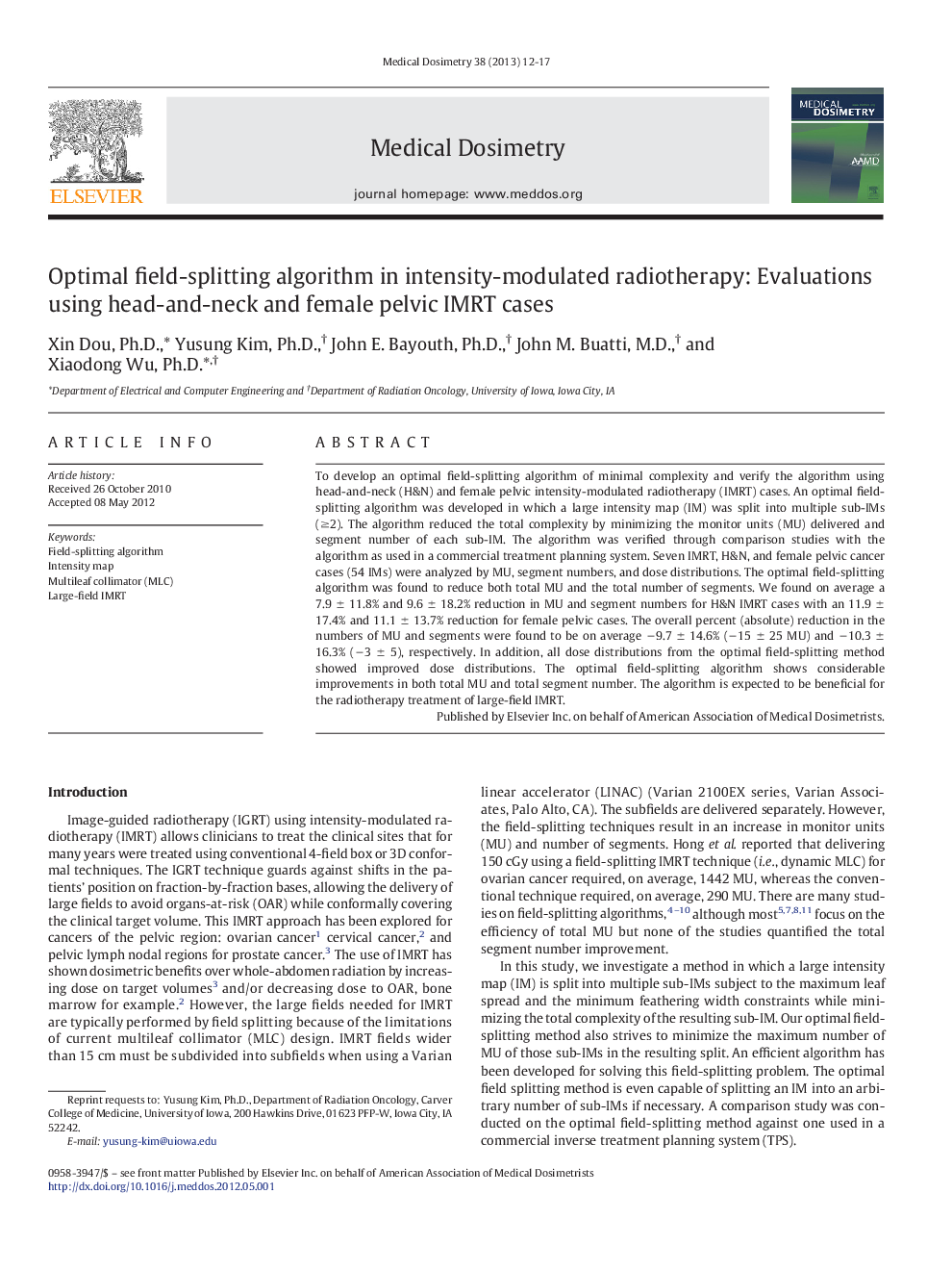| کد مقاله | کد نشریه | سال انتشار | مقاله انگلیسی | نسخه تمام متن |
|---|---|---|---|---|
| 1879993 | 1042856 | 2013 | 6 صفحه PDF | دانلود رایگان |
عنوان انگلیسی مقاله ISI
Optimal field-splitting algorithm in intensity-modulated radiotherapy: Evaluations using head-and-neck and female pelvic IMRT cases
دانلود مقاله + سفارش ترجمه
دانلود مقاله ISI انگلیسی
رایگان برای ایرانیان
کلمات کلیدی
موضوعات مرتبط
مهندسی و علوم پایه
فیزیک و نجوم
تشعشع
پیش نمایش صفحه اول مقاله

چکیده انگلیسی
To develop an optimal field-splitting algorithm of minimal complexity and verify the algorithm using head-and-neck (H&N) and female pelvic intensity-modulated radiotherapy (IMRT) cases. An optimal field-splitting algorithm was developed in which a large intensity map (IM) was split into multiple sub-IMs (â¥2). The algorithm reduced the total complexity by minimizing the monitor units (MU) delivered and segment number of each sub-IM. The algorithm was verified through comparison studies with the algorithm as used in a commercial treatment planning system. Seven IMRT, H&N, and female pelvic cancer cases (54 IMs) were analyzed by MU, segment numbers, and dose distributions. The optimal field-splitting algorithm was found to reduce both total MU and the total number of segments. We found on average a 7.9 ± 11.8% and 9.6 ± 18.2% reduction in MU and segment numbers for H&N IMRT cases with an 11.9 ± 17.4% and 11.1 ± 13.7% reduction for female pelvic cases. The overall percent (absolute) reduction in the numbers of MU and segments were found to be on average â9.7 ± 14.6% (â15 ± 25 MU) and â10.3 ± 16.3% (â3 ± 5), respectively. In addition, all dose distributions from the optimal field-splitting method showed improved dose distributions. The optimal field-splitting algorithm shows considerable improvements in both total MU and total segment number. The algorithm is expected to be beneficial for the radiotherapy treatment of large-field IMRT.
ناشر
Database: Elsevier - ScienceDirect (ساینس دایرکت)
Journal: Medical Dosimetry - Volume 38, Issue 1, Spring 2013, Pages 12-17
Journal: Medical Dosimetry - Volume 38, Issue 1, Spring 2013, Pages 12-17
نویسندگان
Xin Ph.D., Yusung Ph.D., John E. Ph.D., John M. M.D., Xiaodong Ph.D.,